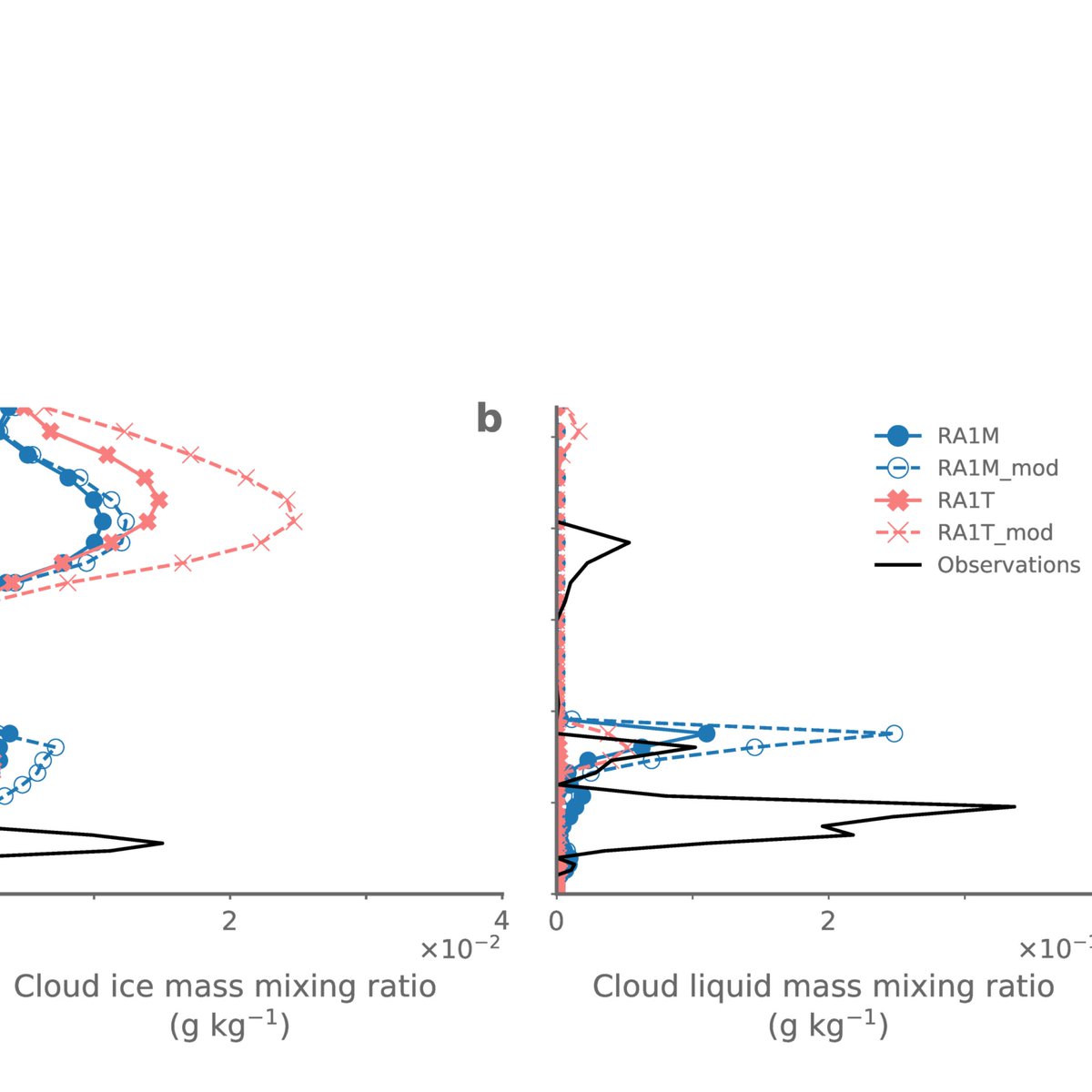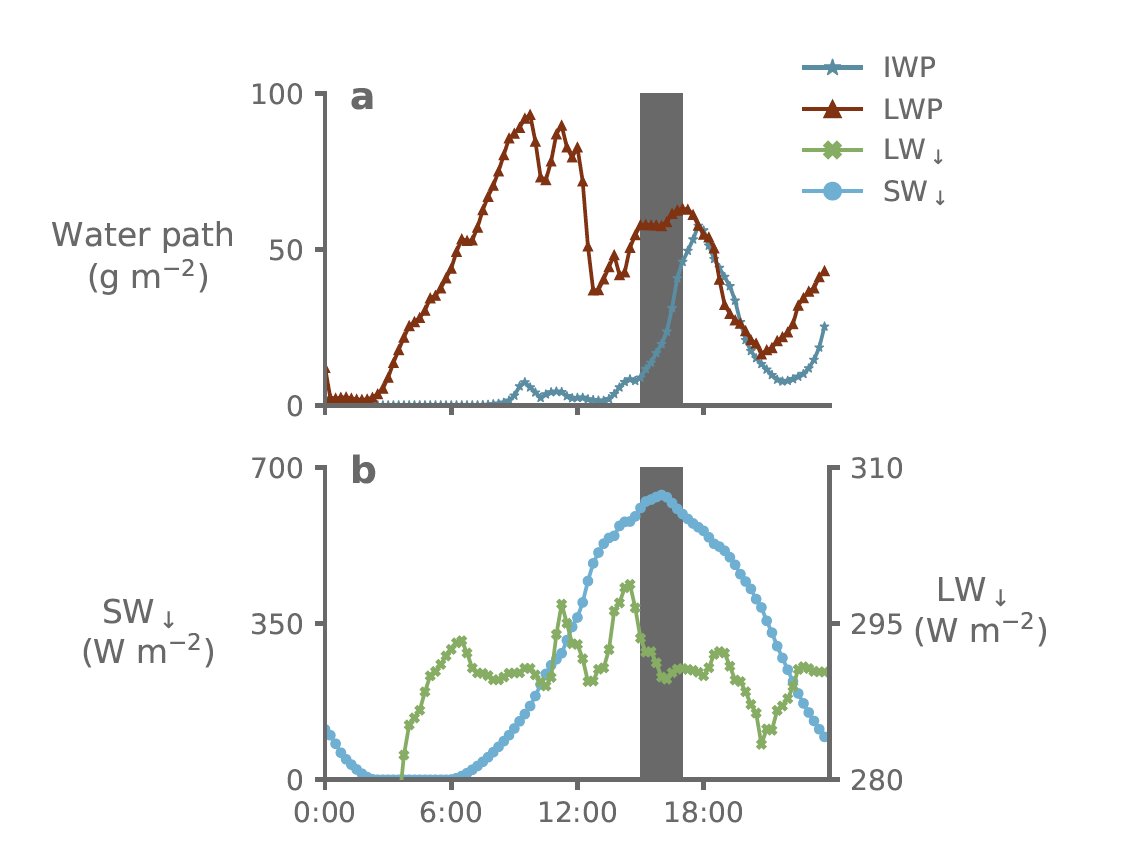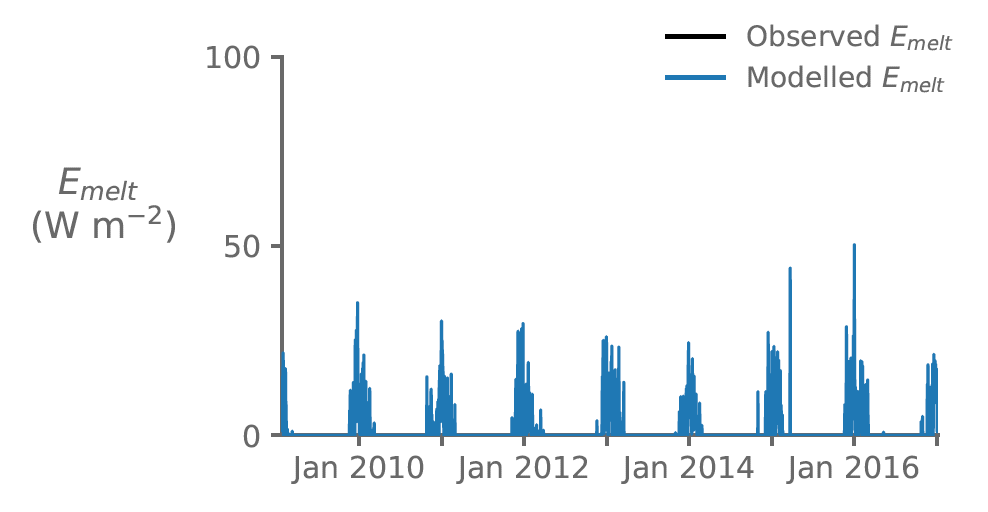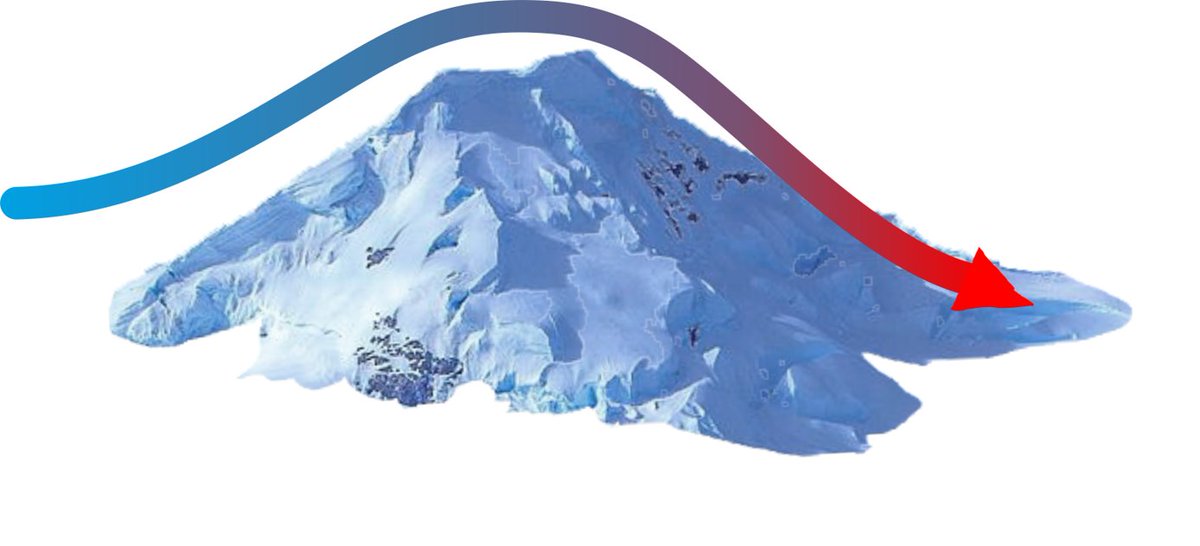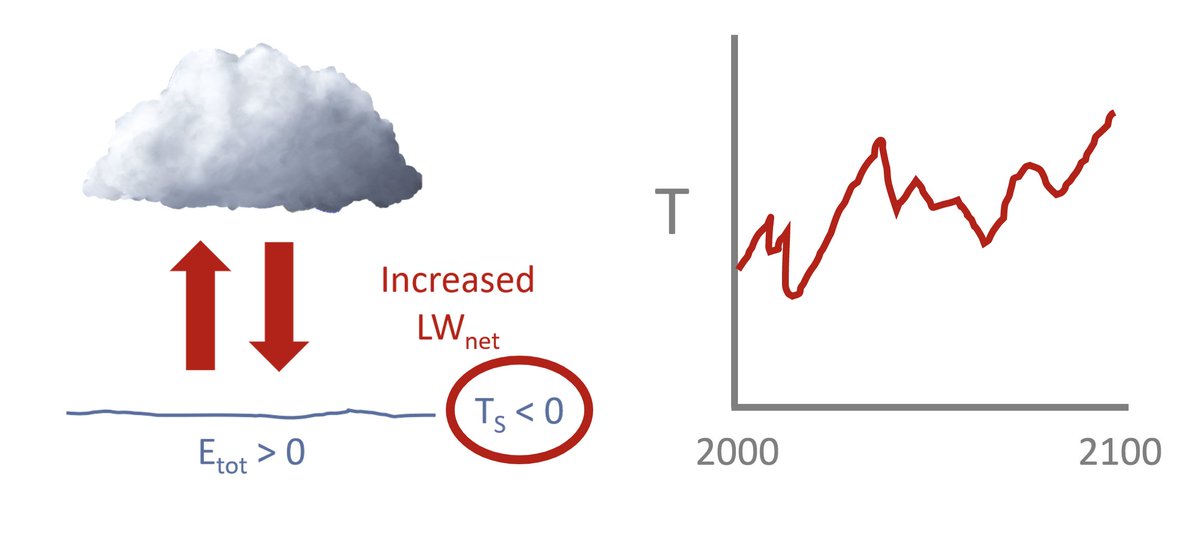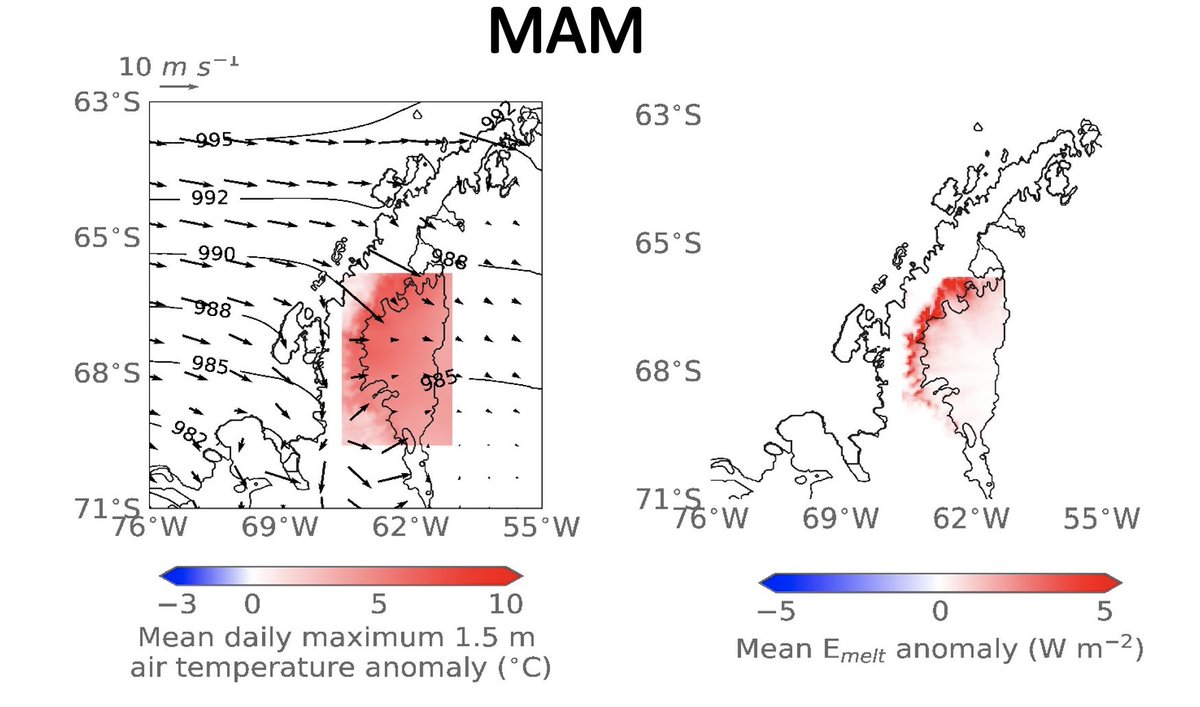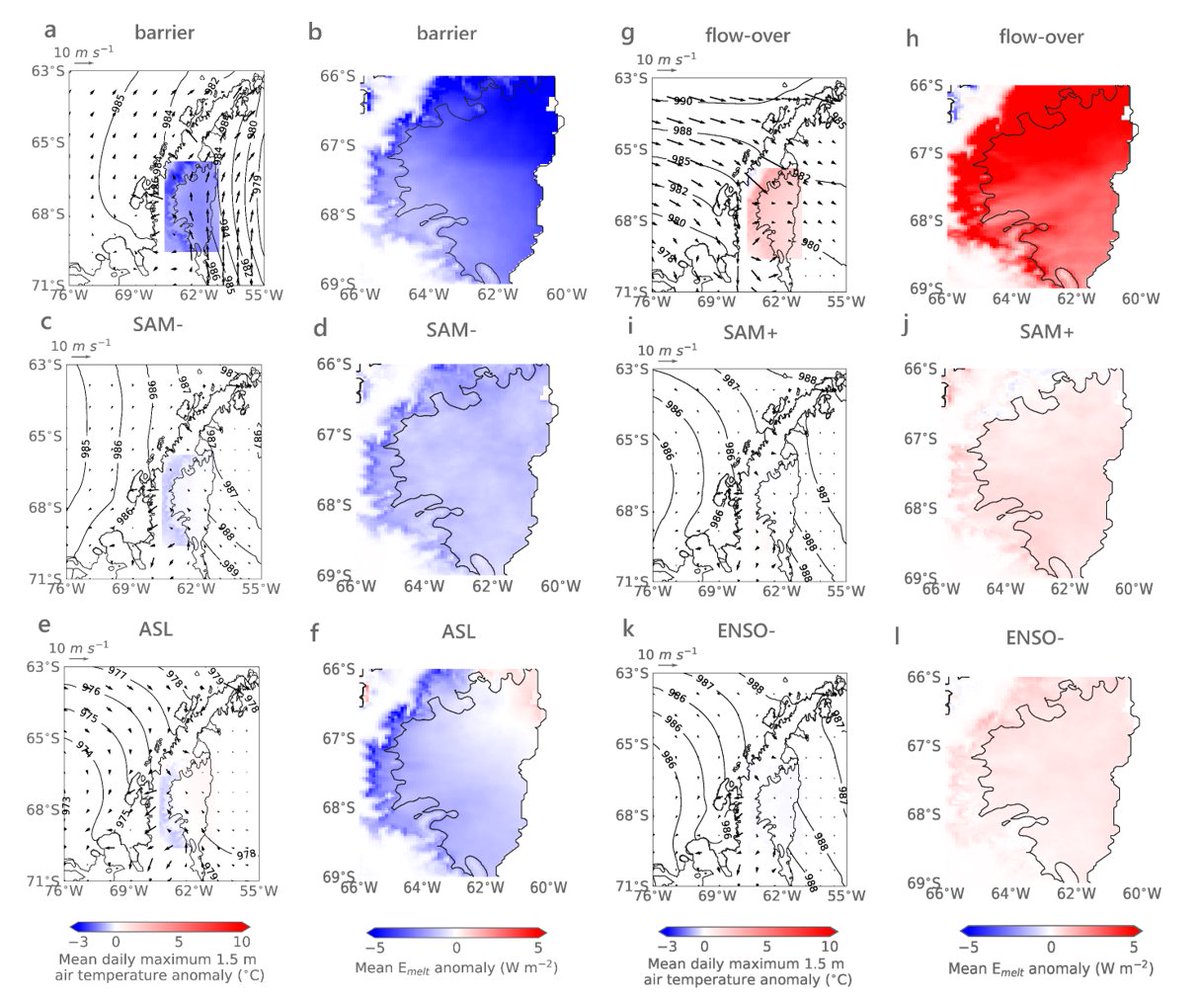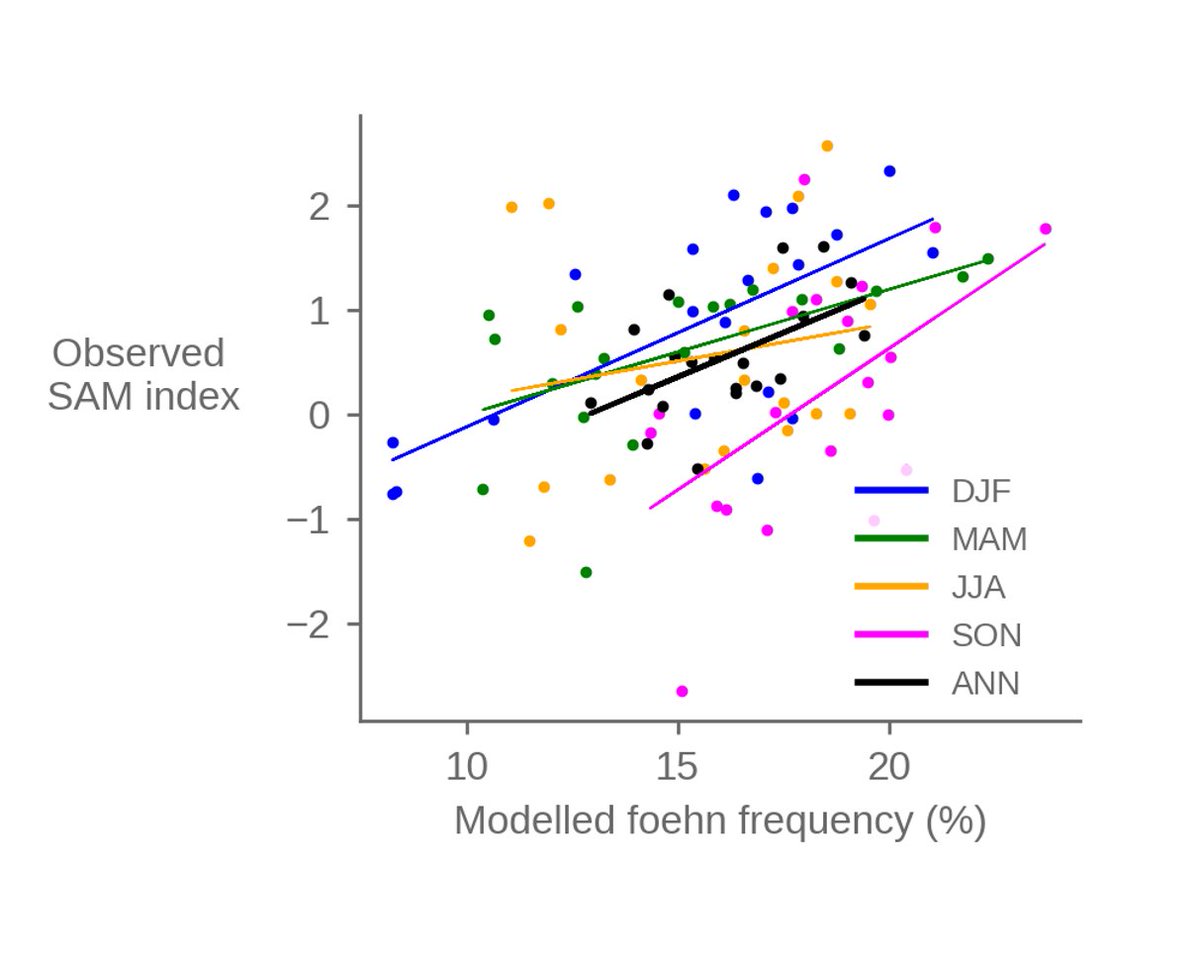1/12 The main conclusions of my #PhD on #Antarctic #IceShelf #melt over #LarsenC, a thread:
#SciComm #PhDchat #ClimateScience #ClimateChange
#SciComm #PhDchat #ClimateScience #ClimateChange
2/ #Foehn events regularly occur on #LarsenC, even in winter, when they can actually cause #melt! - this is largely due to significant sensible heat fluxes (up 300 W/m2 during one event in May 2016)
@PKuipersMunneke wrote this great paper on the subject: https://agupubs.onlinelibrary.wiley.com/doi/full/10.1029/2018GL077899
@PKuipersMunneke wrote this great paper on the subject: https://agupubs.onlinelibrary.wiley.com/doi/full/10.1029/2018GL077899
3/ #Clouds control summertime melting by influencing how much SW radiation reaches the surface of the #IceShelf. Cloud ice/liquid phase partitioning strongly influences the amount of radiation (and hence melt)
For more: https://rmets.onlinelibrary.wiley.com/doi/full/10.1002/qj.3753
For more: https://rmets.onlinelibrary.wiley.com/doi/full/10.1002/qj.3753
4/ #ClimateModels don't represent #Antarctic cloud *that* well, but improving the representation of cloud vertical profile gives better simulated surface energy balance (and hence melt)
5/ Liquid-bearing mixed phase #cloud can initiate summertime melt by raising #temperatures enough to start #melt. More SW reaches the surface as the cloud glaciates + dissipates, and melt continues.
6/ 90% of #melt occurs in summer over #LarsenC, and SW drives the majority of this. However, #foehn events also drive summertime melt, mainly due to the sensible heat they deliver.
7/ 4% & 5% melting occurs in MAM & SON, when #foehn are much more important. Foehn are most common in SON and occur 14-19% of time depending on distance from #mountains
8/ Clouds increase the LW flux and produce an energy surplus, but temperatures during cloudy periods are usually too low for melt to occur. As temps rise alongside future #ClimateChange, #cloud-mediated #melt is likely to become more important.
9/ Large-scale #circulation promotes or suppresses #melt by establishing conditions for SW, #cloud or #foehn-mediated #melting to occur, or for other patterns like barrier winds to reduce temps (and therefore melt).
10/ Positive SAM is the most important circulation pattern for promoting melt, but #ElNiño  also plays a role. #Barrier winds, negative SAM and #LaNiña suppress melt.
also plays a role. #Barrier winds, negative SAM and #LaNiña suppress melt.
 also plays a role. #Barrier winds, negative SAM and #LaNiña suppress melt.
also plays a role. #Barrier winds, negative SAM and #LaNiña suppress melt.

 Read on Twitter
Read on Twitter
